Biophysical Music Talk at the KEAMS/SICMF Seoul International Computer Music Festival
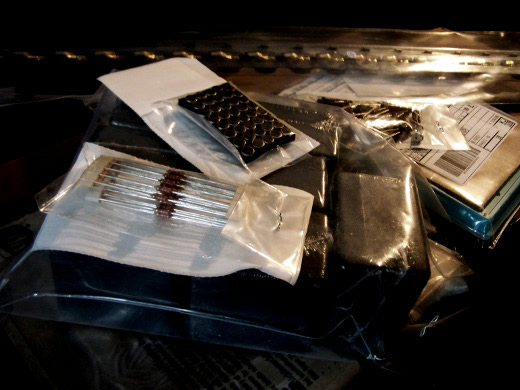
Preparing for the travel
From 20 to 24 October I visited Seoul in South Korea to present the Xth Sense and the new model of biophysical music to the Asian academic community within the frame of the SICMF/KEAMS (Seoul International Computer Music Festival and the Korean Electro-Acoustic Music Society). This engagement was endorsed by Creative Scotland, which awarded me a grant through their International Programme.
Besides, a related paper “Xth sense: a biophysical framework for the application of muscle sounds to interactive music performance” will be published in the Computer Music Journal Emile Vol. 9 soon in the upcoming month.
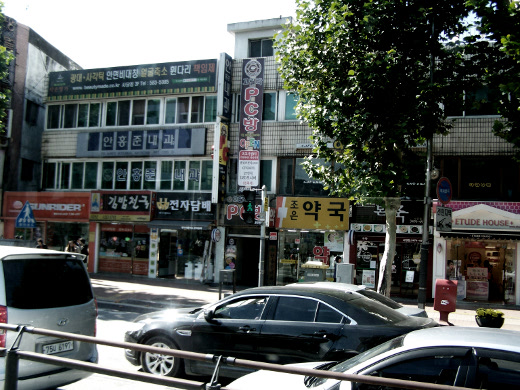
Welcome to Seoul
It was my first journey to an Asian country, although I have participated in other events in Japan, China and India via streaming interventions. Useless to say that the cultural impact was rather strong, the deep differences in society, customs and language are as fascinating as difficult to grasp.
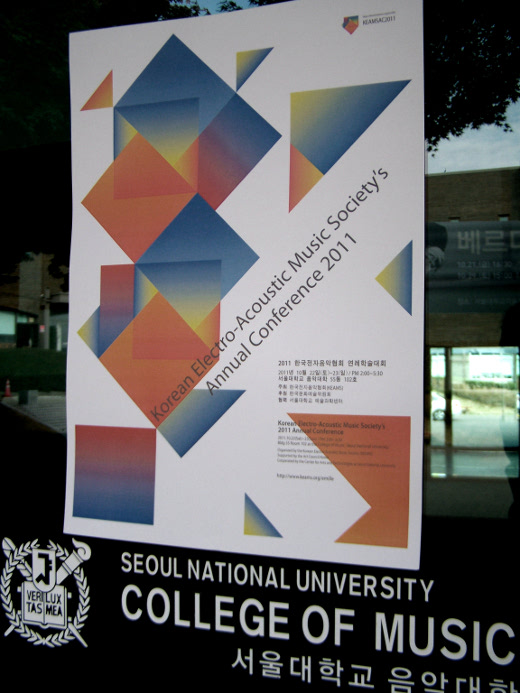
KEAMS poster at the Seoul National University
The event included night concerts hosted by the SICMF and paper presentations organized by KEAMS at the Seoul National University, College of Music. The conference was formerly introduced by Richard Dudas, an American composer which largely contributed to informing today’s computer music practice, and an exquisite person too.
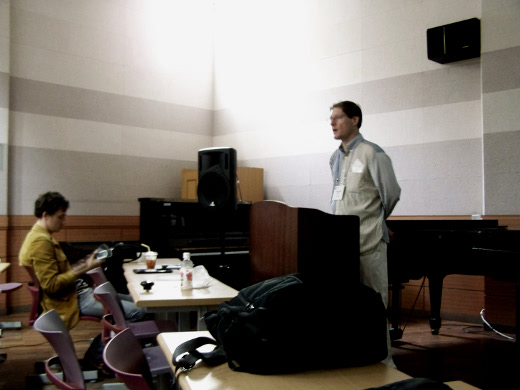
Richard Dudas opening speech
One of the first talks illustrated a site-specific installation project called Tertullia by Nicolas Varchausky. The project consisted of a multi-channel and open air system of loudspeakers located at the Mirogoj Cemetery, Zagreb, Croatia. The work approached “the space as an integrated geography, designing a path for the audience that formally resembled a radio (metaphorically transforming the space into both a receiver and a trasmitter), and creating a real time system for the sound composition.”
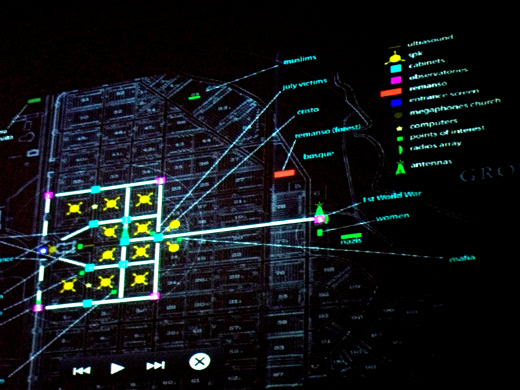
The Tertullia Project by Nicolas Varchausky et al.
The night concerts took place at the Jayu Theater, a majestic multi-purpose building provided with state-of-the-art halls and equipment. The organization was neat and succeded in making the night really enjoyable, by creating a cozy and friendly mood.
Although all pieces were executed by excellent performers, only the piece Black Crane for Geomungo positively impressed me, both sonically and structurally. Personally, I believe the other works were surely very good, but perhaps they lacked of that excellence and innovation touch that I always seek in a piece.
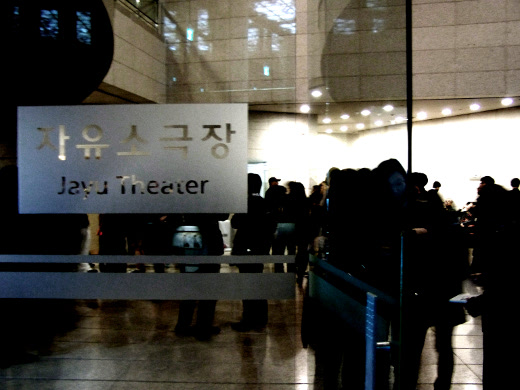
The Jayu Theater, Seoul
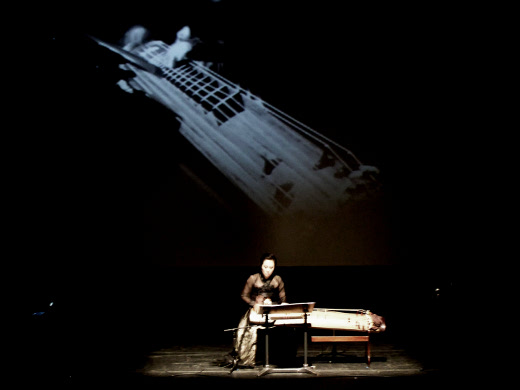
SICMF Concerts | Black Crane for Geomungo by Donoung Lee
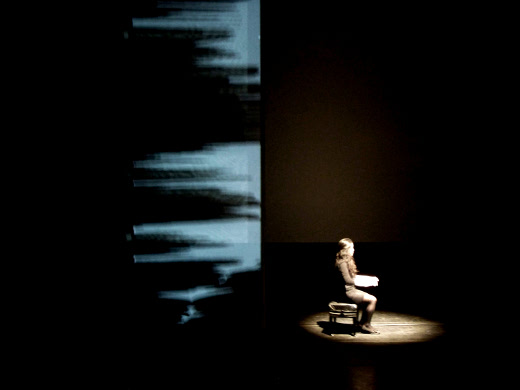
SICMF Concerts | Vpiano by Young Mee Lymn
The second day of the conference offered an exciting schedule. First off were Jieun Oh and Ge Wang from the CCRMA at Stanford University. They presented Converge, “a crowd-sourced audio-visual composition that brings together contextual autobiographical moments, captured and submitted by a group of participants, into a coherent narrative.”
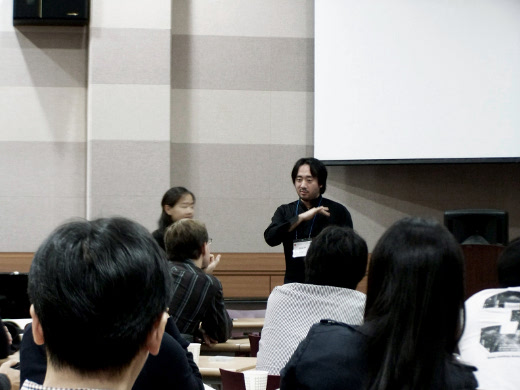
Converge by Jieun Oh and Ge Wang, CCRMA Stanford University
Next, we were delighted by a rather entertaining talk by Clarence Barlow, University of California Santa Barbara. His presentation focused on a detailed excursus through about 25 years of his personal experience with algorithmic composition… mindblowing.
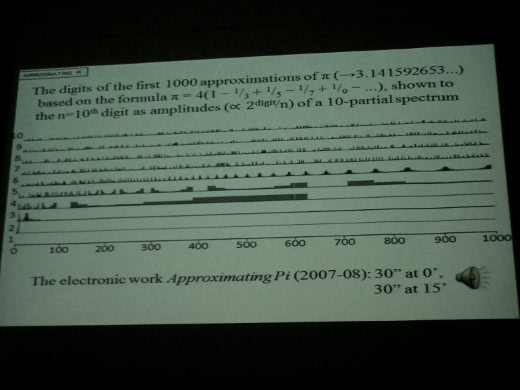
Algorithmic composition by Clarence Barlow, University of California Santa Barbara
Finally, I introduced the Xth Sense technology through an heterogeneous talk which outlined the conceptual and technical developments, along with some aesthetical considerations on the specific sonic forms that can be obtained with the XS biophysical system. I also had the time to perform a short demo.
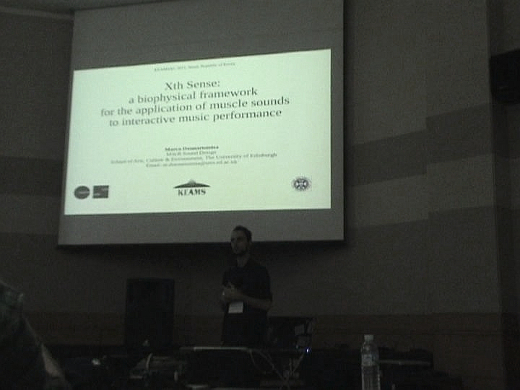
Xth Sense by Marco Donnarumma, SLE University of Edinburgh
Last but not least, Albert Chao from the University of Buffalo talked about his iMeasure custom headphones. From his website: “iM Headphones is embedded with a set of sonar sensors that take spatial readings of the physical environment and “play” particular sounds in relation to the data.”

iMeasure by Albert Chao, University of Buffalo
Unfortunately, I could stay in Seoul only few days, but the conference and the festival were well worth it. A special thanks goes to Richard Dudas and Ko Pyoung Ryang, who were capable of organizing a lovely and rich event, not to mention the amazing hospitality and the great and inspiring conversations we had. Hope to come back soon, perhaps to perform at SICMF 2012.
Here a little glimpse of Seoul (click to enlarge).


